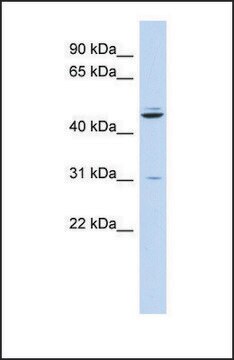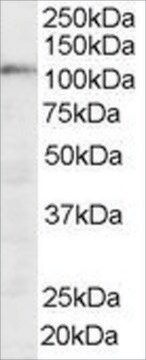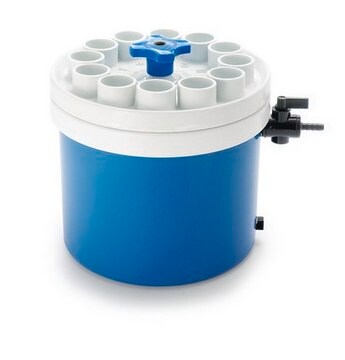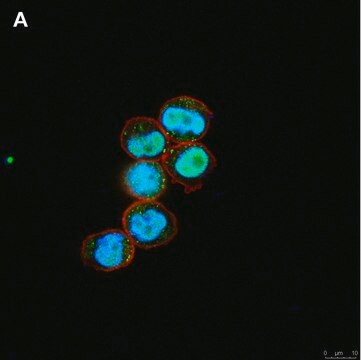ABC1431
Przeciwciało anty-HAF/SART1
serum, from rabbit
Synonim(y):
U4/U6.U5 tri-snRNP-associated protein 1, Allergen Hom s 1, HAF, hSART-1, hSnu66, SART-1, Hypoxia-associated factor, SNU66 homolog, Squamous cell carcinoma antigen recognized by T-cells 1, U4/U6.U5 tri-snRNP-associated 110 kDa protein
About This Item
Polecane produkty
pochodzenie biologiczne
rabbit
Poziom jakości
forma przeciwciała
serum
rodzaj przeciwciała
primary antibodies
klon
polyclonal
reaktywność gatunkowa
human, mouse
metody
ChIP: suitable
immunoprecipitation (IP): suitable
western blot: suitable
numer dostępu NCBI
numer dostępu UniProt
Warunki transportu
ambient
docelowa modyfikacja potranslacyjna
unmodified
informacje o genach
human ... SART1(9092)
Opis ogólny
Specyficzność
Immunogen
Zastosowanie
Analiza immunoprecypitacji: Reprezentatywna partia immunoprecypitowanego HAF z lizatu komórek ludzkiego raka nerki ACHN (Koh, M.Y. et al. (2015). Cancer Res. 75(2):316-329).
Analiza Western Blotting: Reprezentatywne partie wykryły zarówno endogenną, jak i egzogenną ekspresję HAF w różnych transfekowanych ludzkich komórkach nowotworowych, podczas gdy obniżoną ekspresję HAF wykryto w komórkach współtransfekowanych siRNA HAF (Koh, M.Y. et al. (2015). Cancer Res. 75(2):316-329; Koh, M.Y. et al. (2011). Cancer Res. 71(11):4015-4027; Koh, M.Y., et al. (2008). Mol. Cell. Biol. 28(23):7081-7095).
Analiza Western Blotting: Reprezentatywna partia wykryła HAP w immunoprecypitacie HIF-1 z ksenograftów A549, HCT-116 i HT-29 (Koh, M.Y., et al. (2008). Mol. Cell. Biol. 28(23):7081-7095).
Apoptosis & Cancer
Jakość
Western Blotting Analysis: A 1:2,000 dilution of this antiserum detected HAF/SART1 in 10 µg of U2OS nuclear extract.
Opis wartości docelowych
Postać fizyczna
Przechowywanie i stabilność
Zalecenia dotyczące postępowania: Po otrzymaniu i przed zdjęciem nasadki odwirować fiolkę i delikatnie wymieszać roztwór. Rozdzielić do probówek do mikrowirówki i przechowywać w temperaturze -20°C. Unikać powtarzających się cykli zamrażania/rozmrażania, które mogą uszkodzić IgG i wpłynąć na działanie produktu.
Inne uwagi
Oświadczenie o zrzeczeniu się odpowiedzialności
Nie możesz znaleźć właściwego produktu?
Wypróbuj nasz Narzędzie selektora produktów.
Kod klasy składowania
12 - Non Combustible Liquids
Klasa zagrożenia wodnego (WGK)
WGK 1
Certyfikaty analizy (CoA)
Poszukaj Certyfikaty analizy (CoA), wpisując numer partii/serii produktów. Numery serii i partii można znaleźć na etykiecie produktu po słowach „seria” lub „partia”.
Masz już ten produkt?
Dokumenty związane z niedawno zakupionymi produktami zostały zamieszczone w Bibliotece dokumentów.
Nasz zespół naukowców ma doświadczenie we wszystkich obszarach badań, w tym w naukach przyrodniczych, materiałoznawstwie, syntezie chemicznej, chromatografii, analityce i wielu innych dziedzinach.
Skontaktuj się z zespołem ds. pomocy technicznej







